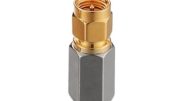The number of reported property crimes in the US has reached 64.5 million yearly. To ensure your commercial property investments are profitable, you need to protect yourself from losses caused by property crime.
Keep reading for the ultimate guide to commercial property security. We will discuss 6 top tips for securing your commercial property, including access control, surveillance, and risk assessment. To attract more tenants and avoid losses, keep reading.
Tips For Securing Your Commercial Property
As a commercial property investor, property manager, or landlord, you must ensure your commercial property is secure. Investing in tighter security will help your tenants feel safer in their homes, improving your retention rates and vacancy rates.
Restricting Access To Your Building
One of the primary objectives of securing your commercial property is preventing unauthorized access. If your building is secured with door locks and security gates, this will make the property a less appealing target.
You can install access control in the following forms:
- Mobile access control – with this technology, your door locks are operated using mobile credentials. Cloud-based access control systems can be monitored and operated remotely using an app.
- Pin pad access control – this technology requires users to enter their unique pin to enter the building.
- Key/fob access control – this technology uses keycards and fobs as entry passes to the building.
Each entry method for commercial building access control systems has its own benefits and disadvantages. However, access control is an essential feature in your commercial building to ensure no intruders can enter the property.
Integrating Physical And Digital Security
If you’re using cloud-based technologies in your commercial building, it can be difficult to distinguish between physical and digital security. By housing your IT and physical security teams together, you can ensure that both your cloud-based security technologies and your cybersecurity strategy are in-line with a more cohesive and blended approach.
If a third party gains access to any remote features of your security system, this could result in a severe security incident. So, it’s in your best interest to combine physical and digital security to meet the challenges of the changing security sphere.
Utilizing Surveillance
Surveillance serves two primary functions in a commercial building security strategy – firstly, it works to prevent crime by deterring criminals. Secondly, it helps to provide evidence of a crime after the fact.
You can opt for visible cameras that help deter crime, and you can pair them with hidden cameras that ensure your camera system cannot be compromised. Since criminals can destroy surveillance cameras in the event of a crime to reduce the potential for documentation and evidence, having hidden cameras ensures you have a fail-safe way of capturing footage of the perpetrators.
Adopting IoT Technologies
Adopting IoT technologies can increase your tenants’ satisfaction by offering them more convenience in their daily activities. For instance, installing garage doors that tenants can open remotely using their mobile devices will allow them to get to work quickly and prevent them from manually opening the entries in the cold during winter months.
IoT technologies can also help your tenants lock their doors, adjust the heating in their rental property, and reduce their energy consumption. The benefits of IoT technologies are endless, and your tenants will be more likely to renew their lease in a property that offers them a secure garage and remotely-operated home features.
Run A Risk Assessment
To fully understand the vulnerabilities of your property, you will need to have a risk assessment performed. A risk assessment will give you an idea of the changes you need to make in your approach to building security, but it will also give you an idea of how you must update health and safety features. If your building’s stairs aren’t compliant with regulations, and neither are your smoke alarms, you could be held liable for any injury caused by these defects.
A risk assessment will also ensure that your security cameras are placed in the optimal location and that there are no blind spots in your system. You can also contact a security camera installer to ensure your cameras are in the optimal position.
Register Your Security System With Your Local Authorities
Suppose an alarm on your property is triggered, or an intruder is detected. In that case, the best option for ensuring you can prevent a crime on your property is by registering your system with local authorities. The authorities will arrive at the property quickly, and they will be able to apprehend any intruders and resolve the incident.
Summary
Along with the visual appeal and price of your rented commercial spaces, you need to appeal to tenants with security. Tenants need to know their assets are secure when stored in your building. If you do not comply with building security and health and safety regulations, you could suffer losses. Consider investing in a risk assessment on your property.





